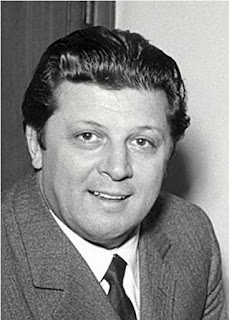Lucrezia Borgia – Pope’s daughter
Notorious blonde beauty inspired painters and poets
Lucrezia Borgia, the illegitimate daughter of Rodrigo Borgia, Pope Alexander VI, was born on this day in 1480 in Subiaco near Rome. A reputedly beautiful woman, she entered into arranged marriages to important men to advance her family’s political position and rumours have abounded about the fate of her first two husbands. Macchiavelli wrote about the Borgia family in his book, The Prince, depicting Lucrezia as some kind of femme fatale and this characterisation of her, whether just or unjust, has lasted over the years, being reproduced in many works of art, books and films. Lucrezia was born to Vannozza dei Cattanei, one of Rodrigo Borgia’s mistresses, and had three brothers, Cesare, Giovanni and Gioffre. When she was just ten years old the first matrimonial arrangement was made on her behalf but was annulled after a few weeks in favour of a better match, which was also later called off. But after Rodrigo became Pope Alexander VI, he arranged for Lucrezia to marry Giovanni Sforza. When the Pope needed a new, more advantageous, political alliance it is thought he may have ordered the execution of Giovanni, but Lucrezia was able to warn her husband and he fled to Rome. Read more…
____________________________________________________________
Ilario Bandini - racing car maker
Farmer's son who created beautiful and successful cars
Ilario Bandini, a businessman and racing driver who went on to construct some of Italy’s most beautiful racing cars, was born on this day in 1911 in Villa Rovere in Emilia-Romagna. His cars won races in Europe and America and his designs earned the respect of the great Italian performance car maker Enzo Ferrari. Bandini was from a farming family but was fascinated with cars and motorcycles and began to work part-time as a mechanic while he was still at school, eventually becoming an apprentice in a workshop in nearby Forlì. At the age of 25 he took the bold decision to move to Eritrea, then an Italian colony, in northern Africa, where he repaired trucks and in time set up a transport business, which was very successful. The venture made him enough money to open a garage in Forlì when he returned to Italy in 1939, running a repair workshop alongside a car rental and chauffeured limousine business. At around the same time, he began to compete in motorcycle races, soon graduating from two wheels to four. In 1940, he took part in the Mille Miglia, the 1,000-mile road race from Brescia to Rome and back. Read more…
__________________________________________________________
Ippolita Maria Sforza – noblewoman
Learned lady sacrificed happiness for a political alliance
Ippolita Maria Sforza, a cultured young noblewoman who wrote poetry, letters and documents in Latin, was born on this day in 1446 in Cremona. She was married to Alfonso, Duke of Calabria, who later became King Alfonso II of Naples, because it was a politically advantageous alliance, but she did not live long enough to become his Queen consort. Ippolita was the eldest daughter of Francesco I Sforza, Duke of Milan, and Bianca Maria Visconti. She was tutored along with her six younger brothers and one younger sister by a Greek scholar who taught her philosophy and Greek. When she was 14 years old she composed a Latin address for Pope Pius II, which became well known after it was circulated in manuscript form. She wrote many letters, which were published in Italy in one volume in 1893. She also wrote poetry and a Latin eulogy for her father, Francesco. Ippolita was married at the age of 19 to Alfonso, the eldest son of King Ferdinand I of Naples. The marriage created a powerful alliance between the Kingdom of Naples and the Duchy of Milan. But her husband treated her with a lack of respect throughout their marriage. Read more…
_________________________________________________________
Giuseppe Pella – prime minister
Economist did wonders for the value of the lira
Giuseppe Pella, who served as the 31st prime minister of Italy from August 1953 to January 1954, was born on this day in 1902 in Valdengo in Piedmont. Pella is considered one of the most important politicians in Italy’s postwar history because his economic and monetarist policies led to the strong economic growth that transformed his shattered country into a global industrial power and improved the standard of living for most Italians. Born into a family of sharecroppers, after finishing elementary school Pella attended a technical school and then an accounting institute in Turin. He graduated in economy and commerce in 1924. Pella became a professor of accounting at the Sapienza University of Rome and the University of Turin and also worked as a tax advisor and auditor. Under the Mussolini regime, Pella was forced to join the National Fascist Party to be able to continue with his profession. He was appointed a member of the governing council of the Fascist Culture Provincial Institute of Biella, a town near his birth place of Valdengo, and in the late 1930s was appointed deputy podestá - mayor - of Biella. Read more…















